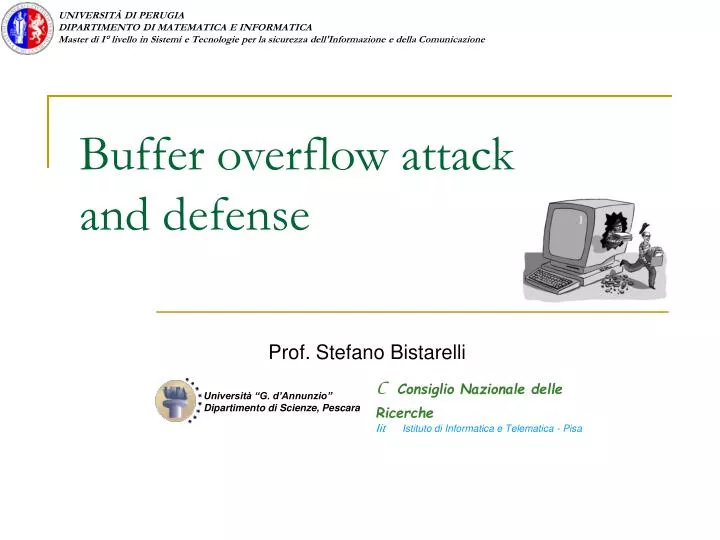

Kiriansky V, Bruening D, Amarasinghe S (2002) Secure execution via program shepherding. In: ASPLOS, New York, pp 85–96Ĭrandall J, Chong F (2004) Minos: control data attack prevention orthogonal to memory model. Suh G, Lee J, Zhang D, Devadas S (2004) Secure program execution via dynamic information flow tracking. In: ACM CCS, Washington, DC, pp 281–289Ībadi M, Budiu M, Erlingsson U, Ligatti J (2005) Control-flow integrity.
BUFFER OVERFLOW ATTACK IN NETWORK SECURITY CODE
In: ACM CCS, Washington, DC, pp 272–280īarrantes E, Ackley D, Forrest S, Palmer T, Stefanovic D, Zovi D (2003) Randomized instruction set emulation to disrupt binary code injection attacks. Kc G, Keromytis A, Prevelakis V (2003) Countering code-injection attacks with instruction-set randomization. The easiest method to buffer overflow a program is. In: USENIX security symposium, San Antonio, pp 63–78 Buffer overflow vulnerabilities are caused when a program puts data into a buffer but forgets to check the buffer boundary 2. In: ACM CCS, Washington, DC, pp 298–307Ĭowan C, Pu C, Maier D, Hinton H, Bakke P, Beattie S, Grier A, Wagle P, Zhang Q (1998) Stackguard: automatic detection and prevention of buffer-overflow attacks. Return to libc attacks a computer security attack usually starting with a buffer overflow. Shacham H, Page M, Pfaff B, Goh EJ, Modadugu N, Boneh D (2004) On the effectiveness of address-space randomization. or flood a network with messages as a denial of service attack. In: USENIX security symposium, Washington, DC, pp 105–120 Buffer overflow attack typically contains executables where as legitmate. In: ACM CCS, Alexandria, pp 322–335īhatkar S, DuVarney D, Sekar R (2003) Address obfuscation: an efficient approach to combat a broad range of memory error exploits. Buffer overlow is one of the most occuring security vulnerability in computers world. In: USENIX security symposium, Baltimore, pp 177–192Ĭadar C, Ganesh V, Pawlowski P, Dill D, Engler D (2006) EXE: automatically generating inputs of death. In: ACM CCS, Alexandria, pp 552–561Ĭhen S, Xu J, Sezer E, Gauriar P, Iyer R (2005) Non-control-data attacks are realistic threats.

Shacham H (2007) The geometry of innocent flesh on the bone: return-into-libc without function calls (on the x86).

Levy E (1996) Smashing the stack for fun and profit.


 0 kommentar(er)
0 kommentar(er)
